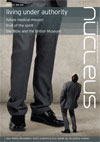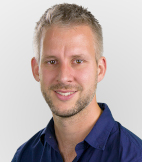John Greenall considers dramatic changes..
What do you think when you hear the words 'medical mission'? Let me be clear from the outset - mission through medicine can, and should happen wherever we are. But here I want to consider the medical mission we might define as 'overseas cross-cultural missionary service through medical work'. You know, the kind that most people are referring to when they ask if you are planning to be a medical missionary.
Do Christian medics still have a role when the era of mission hospitals seems to be in decline, and when it seems to be harder than ever to step out of the system? Knowing the answer to this, and the range of possibilities now on offer means we will be better placed to prepare well.
'Heavy artillery'
A brief survey of what has gone before can inform and inspire us as we think to the future.
Caring for the sick and dying has been a hallmark of the Christianity over the centuries. (1) However the first phase of medical missions as we know them today was that of the pioneers. They included Dr John Thomas (who preceded William Carey to India in 1773) and Clara Swain (first female medical missionary to India, 1870). In 1900 medical missions were described as 'the heavy artillery of the missionary army' (2) and soon over 2000 doctors from the USA and Europe were serving worldwide. The curative phase saw mission hospitals being built all over the world and they were used to reach large numbers of people, (3) healing and preaching going hand in hand. By 1958 there were 786 mission hospitals globally. (4) Missionary doctors tended to be jack of all trades, and patient contact was often the time at which local people encountered the gospel. Indeed in India, it has been reported that 80% of the Christians relate their conversion to a mission hospital experience. (4)
By the mid-1970s things were changing again, with Christians pioneering preventative health care. They saw that preventing disease (eg through basic hygiene, water sanitation and sex education) saved more lives than curative medicine alone. (5) Indeed in 1978 the World Health Organisation adopted primary healthcare as official policy. (6) At the same time mission hospitals were becoming expensive to run, and many merged or were taken over by government institutions. Governments started to take more responsibility for the health of their people and worldwide development projects (eg for HIV/AIDS) were rolled out one after the other in the late 1980s and early 1990s.
Current trends in medical mission
As revealed in last year's Lancet papers, (7) faithbased healthcare today is still much respected and plays a big role in the developing world, providing, for example, up to 70% of healthcare in sub-Saharan Africa. (8) However, the delivery of this healthcare is changing, as is the understanding of what a medical missionary is and does. Below I have compared surveys of medical missionaries ranging from 1969 to 2014, (9-13) along with telephone discussions I have had with mission directors of five UK-based mission agencies, and made a number of observations.
Place and type of work
In 1969, 70% doctors worked in a hospital and 30% in a clinic, which suggests there were few or no other contexts of work. In 2014 less than half of doctors worked in mission hospitals, with others working with NGOs and government hospitals. One mission agency sends doctors specifically to prisons. A number of faith-based programs now have preventative health as their main priority e.g. Community Health Evangelism (14) and CHGN. (15) Notably however, up to 70% of doctors plan to work in mission/church organisations in the future. (11)
The remit of medical missionaries within their role has also changed. Mission directors expressed to me that doctors are ideally placed to lead, disciple, train and manage in a more integrated approach, one saying that any medicine they do is a 'bonus'.
2011 survey respondents spent on average 61% of their time on medical work and 39% time on administration, organisational leadership and church-related responsibilities. (12)
Are we being prepared for these diversifying responsibilities? It would seem not. For what is the future of medical mission? instance, 20-40% respondents in one survey felt that they lacked the training necessary to carry on their work. (12) At present many doctors and nurses train, do a tropical medicine course and then travel, but in the future their preparation must be broader because of the growth of their role.
Short term missions
Short term missions are a more recent phenomenon, most commonly focussed on teaching and training. For example the organisation PRIME (16) was established 14 years ago and is now training medical educators to in turn train healthcare workers.
Characteristics of medical missionaries
Whilst the number of medical missionaries going overseas has remained steady, doctors are now going later in their careers (the average age of responders in one survey was 48). (12)
There is now more emphasis than ever on bringing a particular skill to more developed healthcare systems compared to the old 'jack of all trades' generalist of yesteryear.
In 1969 29% doctors had a speciality (9) compared to 90% in 2014. (13)
Furthermore, one agency said they no longer have clinical nursing roles available, only offering roles training national nurses. Financially, in 1969 81% doctors were salaried by mission boards; (9) today doctors are mostly self-supporting.
Why have there been so many dramatic changes? Space restricts the discussion here, but factors include the rise of technology and improved communication. Nowadays governments provide much more healthcare (17) and mission hospitals fall behind due to lack of comparable funding. (18) For example, in Thailand one mission hospital used to serve a whole province as the only reliable healthcare source. Now there are 47 outlets serving the same province. (19)
Future trends in medical mission
In the light of both the past and the present, what will medical mission look like in the next 20 years? And therefore how can students prepare? The answer to this question can be grouped under three main headings.
MEDICAL MISSION WILL BE...
VARIEDWhilst mission hospitals are less crucial, they are still viable in some pockets of need which are neglected by governments. However, medical missionaries are already becoming involved in every area of medicine from treating acutely ill patients to setting policy. They will increasingly come from (almost) anywhere in the world to work (almost) anywhere in the world. (20) As well as being medical they will also be managers, writers, church leaders or even theologians. They will work in a variety of settings, from universities to small clinics and from tertiary hospitals of more developed nations to health centres in countries with minimal healthcare. Urban ministry needs greater attention; (21) the worldwide phenomenon of urbanisation means that five billion people are expected to live in cities by 2030. (22) A recent Nucleus article illustrates this well. (23)
STRATEGIC AND VISIONARYMedical missionaries will not just go to places people have always gone, for example replacing an expatriate doctor to maintain a mission hospital. They will however continue to reach those who are neglected by the local or global community, 24 pioneering in areas such as HIV, famine, refugee medicine and disaster management. They will engage in politics and lead the agenda in global health, thinking outside the box, engaging through technology, writing TV programmes and becoming involved in the media. They will engage as a prophetic voice in a world where the traditional Christian ethic of medicine has been eroded, 25 speaking into contemporary issues such as abortion, transhumanism and eugenics.
HOLISTIC AND IN PARTNERSHIP WITH THE LOCAL CHURCHChristian doctors are in a key position to lead in integral mission but must increasingly see themselves as members of a bigger team, partnering with other development professionals.
Furthermore, medical missionaries must be clear in their theology of medical mission; it is not 'bait' to catch fish, nor is it just treating people without pointing them to Christ. Instead, medical missionaries must couple evangelistic zeal with genuine compassion for humans, whether people respond to Christ or not. 26 Indeed holistic care through church-linked community health is seen by many as the best and perhaps the only way for true integral mission to take place.
So how can I prepare?
At CMF we want to help you prepare to engage in medical mission. Here are just some of the many ways you can do so
1. Attend a course
a. 'Who Is My Neighbour'
b. The Developing Health Course 30 (next running 26 June - 8 July 2016) including a mission fair 29 June, 7-9pm
c. Migrant Health Course (25 June 2016, Leeds)
2. Devour some resources
a. Short-Term Medical Work 31 outlines practice guidelines for short visits and mission teams
b. Working Abroad Handbook 32 is a comprehensive guide to working overseas
c. The Electives Handbook 33 is a terrific resource for medical students preparing their elective
d. Watch this space - a new resource for junior doctors will be available soon
3. Connect with, pray and support CMF members overseas
a. CMF has over 250 members serving overseas. Membership means you get to contact them and pray for them; check out our mission directory 34
b. Perhaps your CMF group can consider linking with CMF members overseas and committing to pray for them
4. Go! a. On an elective to a developing world country - read, and if you can, contribute to elective reviews on our website 35
b. On a short term mission team with CMF this and every summer - test the waters.
Conclusion
History has shown that medical missionaries have always been at the forefront of changes in medical science and practice. The issues confronting medical missions today may be different, but are no less challenging. The challenge to students is the need to develop a godly character and to embody excellence and integrity. 27 Medical mission will continue to be costly, be it professionally, financially or in personal security.
Rather than looking back wistfully to the 'golden era' of medical missions, we can look forward to the glorious opportunities that lie ahead. The world needs committed, Godhonouring, well-trained medics and nurses who are prepared to live out transformed lives for the sake of the gospel. More than ten years ago, a CMF article finished with a challenge which I repeat: 'The original pioneers of medical mission were willing to do something no one had ever done before. Are we?' 28
FOOTNOTE:
Do also read the recent panel discussion in Triple Helix 'The Changing Scene in Global Health' which offers helpful pointers from many actively involved in aspects of medical mission and very much complements the above. 29
































